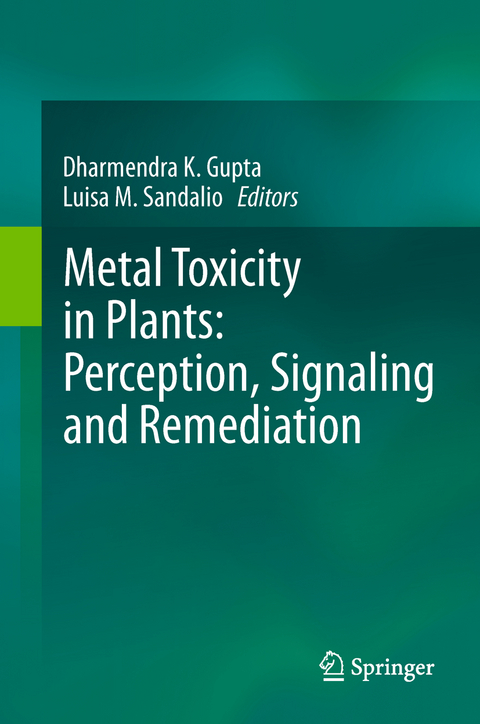
Metal Toxicity in Plants: Perception, Signaling and Remediation
Springer Berlin (Verlag)
978-3-642-42828-9 (ISBN)
Heavy metal accumulation in soil and water from natural sources or anthropogenic activities have produced severe environmental contamination in some parts of the world due to the persistence of metals in the environment by their accumulation throughout the food chain. The purpose of this book is to present the most recent advances in this field, mainly concerning the uptake and translocation of heavy metals in plants, mechanisms of toxicity, perception of metal and regulation of cell response under metal stress. Another key feature of this book is related to the studies on signaling and remediation processes in recent years, which have taken advantage of recent technological advances including "omic" approaches. In recent years transcriptomic, proteomic and metabolomic studies have become very important tools for analyzing both the dynamics of changes in gene expression and the profiles of protein and metabolites under heavy metal stress. This information is also very useful for plotting the complex signaling and metabolic network induced by heavy metals, in which hormones and reactive oxygen species (ROS) also play an important role. Understanding the mechanism involved in sequestration and hyperaccumulation is very important to developing new strategies of phytoremediation, which are reviewed in several chapters of this book. The information included yields very stimulating insights into the mechanism involved in the regulation of plant responses to heavy metals, which in turn improve our knowledge of cell regulation under metal stress and the use of plants for phytoremediation.
Heavy Metal Bindings and Its Interactions with Thiol Peptides and Other Biological Ligands in Plant Cells.- Heavy Metal Perception in a Microescale Environment: A Model System Using High Doses of Pollutants.- Genetic and Molecular Aspects of Metal Tolerance and Hyperaccumulation.- Cadmium and Copper Stress Induce a Cellular Oxidative Challenge Leading to Damage Versus Signaling.- Insights into Cd Toxicity: Reactive Oxygen and Nitrogen Species Function.- Exploring the Plant Response to Cadmium Exposure by Transcriptomic, Proteomic and Metabolomic Approaches: Potentiality of High-Throughput Methods, Promises of Integrated Biology.- Proteomics as a Toolbox to Study the Metabolic Adjustment of Trees During Exposure to Metal Trace Elements.- Proteomics of Plant Hyperaccumulators.- Heavy Metal Toxicity-Oxidative Stress Parameters and DNA Repair.- Protein Oxidative Modifications.- Zn/Cd/Co/Pb P1B-ATPases in Plants, Physiological Roles and Biological Interest.- Interference of Heavy Metals Toxicity with Auxin Physiology.
| Erscheint lt. Verlag | 10.10.2014 |
|---|---|
| Zusatzinfo | X, 264 p. |
| Verlagsort | Berlin |
| Sprache | englisch |
| Maße | 155 x 235 mm |
| Gewicht | 427 g |
| Themenwelt | Naturwissenschaften ► Biologie ► Biochemie |
| Naturwissenschaften ► Biologie ► Botanik | |
| Weitere Fachgebiete ► Land- / Forstwirtschaft / Fischerei | |
| Schlagworte | abiotic stress • Heavy metals • perception • Phytoremediation • Proteomics • Reactive oxygen species • Signaling |
| ISBN-10 | 3-642-42828-2 / 3642428282 |
| ISBN-13 | 978-3-642-42828-9 / 9783642428289 |
| Zustand | Neuware |
| Haben Sie eine Frage zum Produkt? |
aus dem Bereich


